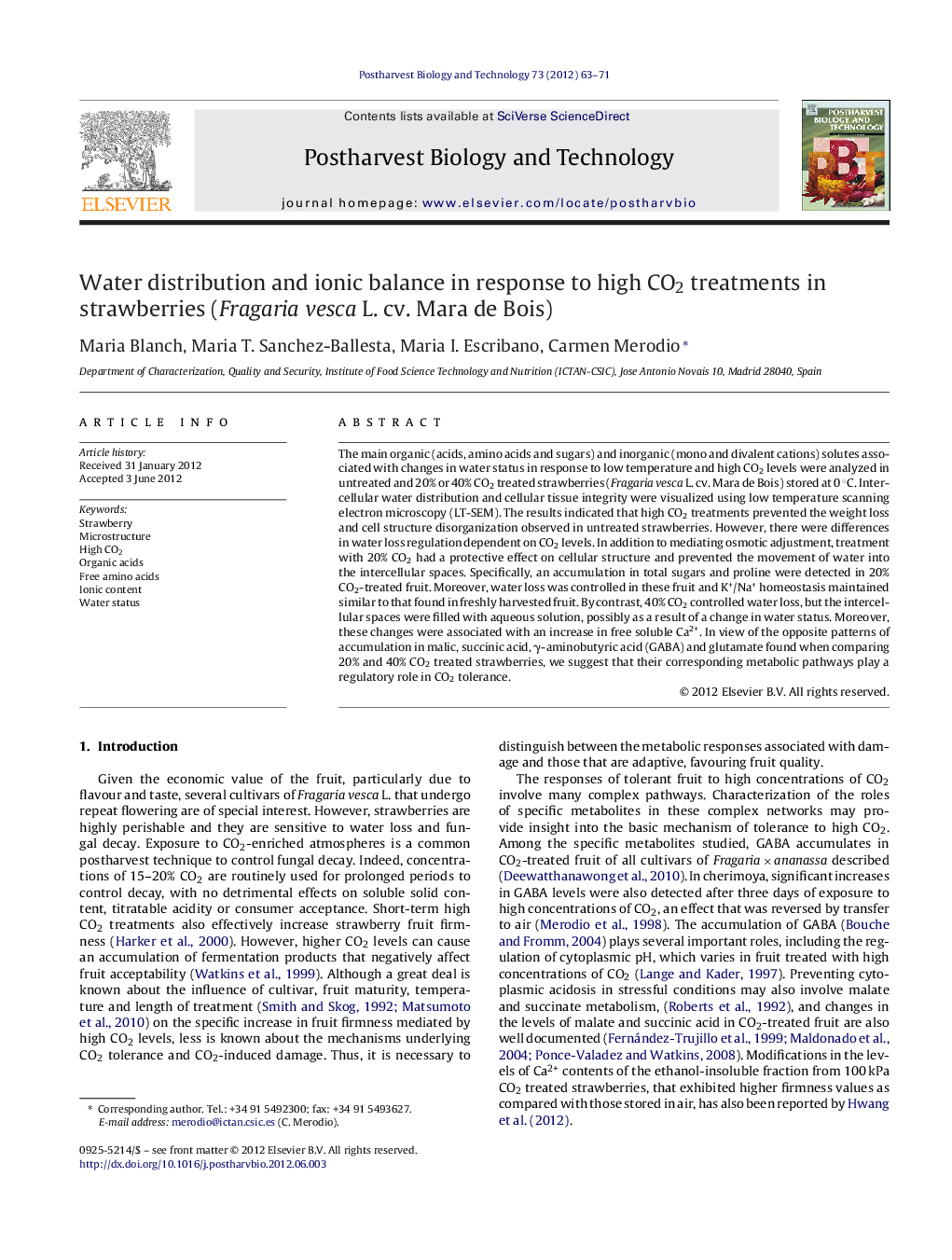| Article ID | Journal | Published Year | Pages | File Type |
|---|---|---|---|---|
| 4518556 | Postharvest Biology and Technology | 2012 | 9 Pages |
The main organic (acids, amino acids and sugars) and inorganic (mono and divalent cations) solutes associated with changes in water status in response to low temperature and high CO2 levels were analyzed in untreated and 20% or 40% CO2 treated strawberries (Fragaria vesca L. cv. Mara de Bois) stored at 0 °C. Intercellular water distribution and cellular tissue integrity were visualized using low temperature scanning electron microscopy (LT-SEM). The results indicated that high CO2 treatments prevented the weight loss and cell structure disorganization observed in untreated strawberries. However, there were differences in water loss regulation dependent on CO2 levels. In addition to mediating osmotic adjustment, treatment with 20% CO2 had a protective effect on cellular structure and prevented the movement of water into the intercellular spaces. Specifically, an accumulation in total sugars and proline were detected in 20% CO2-treated fruit. Moreover, water loss was controlled in these fruit and K+/Na+ homeostasis maintained similar to that found in freshly harvested fruit. By contrast, 40% CO2 controlled water loss, but the intercellular spaces were filled with aqueous solution, possibly as a result of a change in water status. Moreover, these changes were associated with an increase in free soluble Ca2+. In view of the opposite patterns of accumulation in malic, succinic acid, γ-aminobutyric acid (GABA) and glutamate found when comparing 20% and 40% CO2 treated strawberries, we suggest that their corresponding metabolic pathways play a regulatory role in CO2 tolerance.
► CO2 treatments controlled weight loss and retained cell structure in strawberries compared with air. ► 20% CO2 increased cell water retention, but 40% resulted in intercellular spaces filled with aqueous solution. ► 20% CO2 maintained K+/Na+ ratios similar to those in freshly harvested fruit. ► 40% CO2 modified the K+/Na+ balance and water status and increased free soluble Ca2+. ► 20% CO2 resulted in accumulation of total sugars and proline, and there were differences in accumulation of malic and succinic acids between 20 and 40% CO2-treated strawberries.
